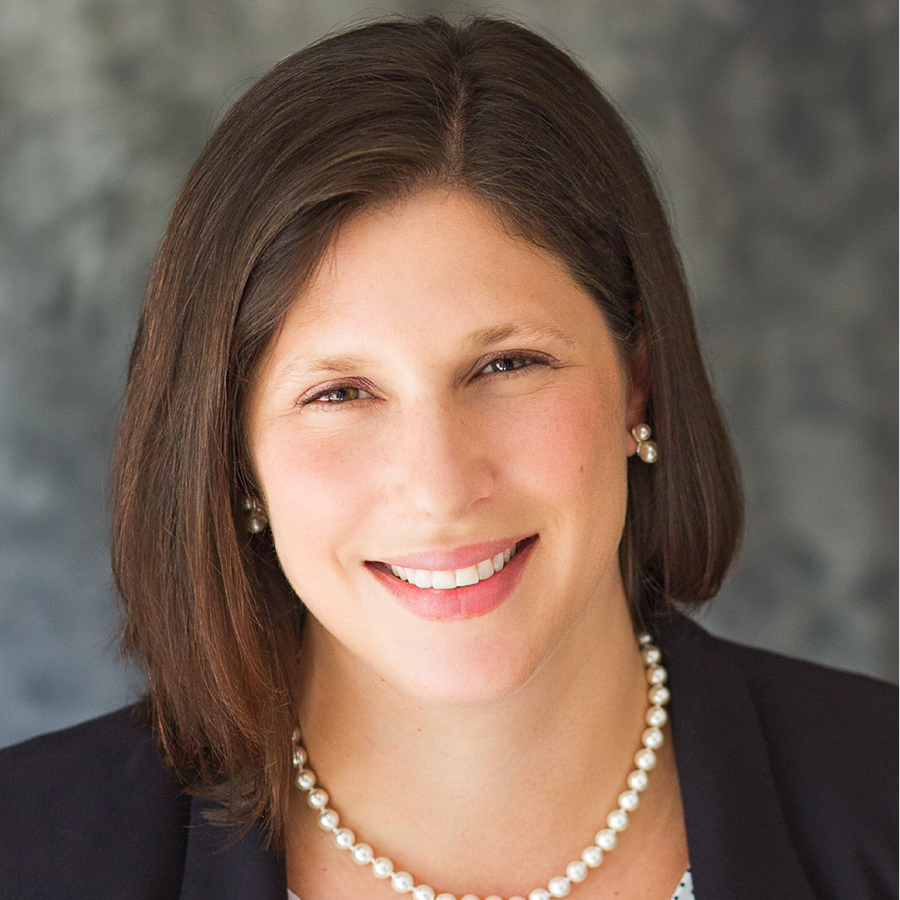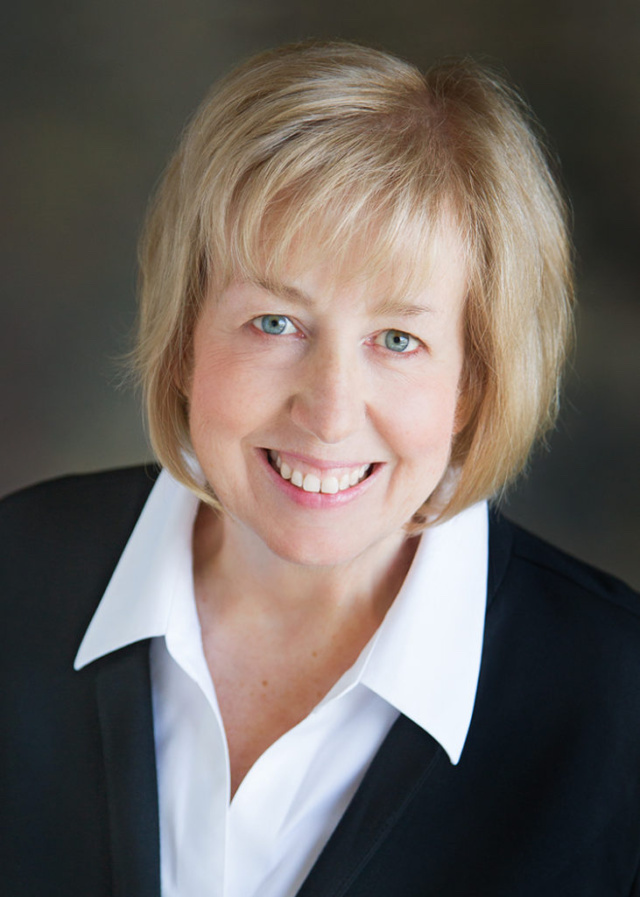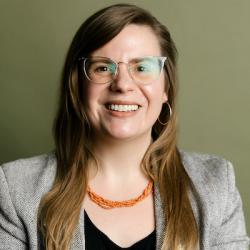Early in March, I began to get emails from my child’s school, stating that children might be moving to e-learning at home as a result of the novel coronavirus. I remember sliding my thumb over the email on my phone, back and forth, worrying and rereading. My first response was to send an email to my therapist with the subject line, “Will we still be able to meet?” Feeling overcome by fear about what might be looming, I needed to know that one stabilizing force in my life would remain intact. I was lucky enough to already have a therapist with whom I had built a very good rapport. I began to wonder how many people in Monroe County would need to access the kind of support I was fortunate enough to receive, and how Catholic Charities Bloomington (CCB), where I work, would possibly support the numerous people I saw posting urgently on community Facebook threads.
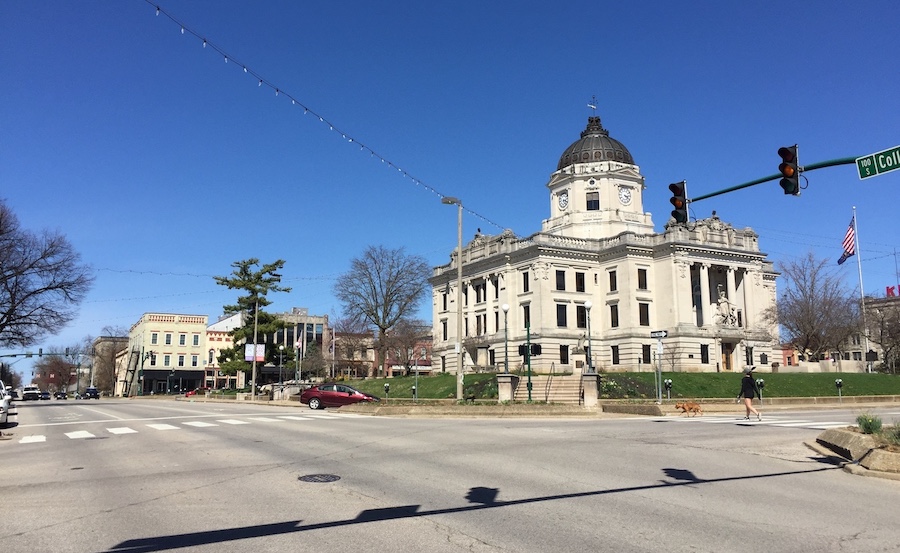
A photo from March 25, 2020, showing an empty College Avenue when people were advised to stay at home due to the novel coronavirus. Since then, isolation has affected many people’s mental health. | Limestone Post
The pandemic has taken a toll on the nation’s mental health, there’s no question about that. In Monroe County, greater numbers of folks are seeking counseling services, psychiatric medication, and other kinds of mental health services than during pre-pandemic times. As a comparison, September is when Catholic Charities usually sees the greatest number of clients, mainly because schools resume. In September 2019, CCB provided 691 counseling sessions; conversely, we provided 793 sessions in September 2020. The majority of agencies and providers offering mental health care in Bloomington are currently working at capacity to ensure that people who seek help receive the support they need, with both great success and some challenges. While a vaccine is slowly being rolled out, the mental health issues that have been brought to the surface as a result of economic distress, loss, and isolation will likely linger for a while. Many providers had to act quickly due to lockdown measures to reinvent how they offer mental health services, and their adaptations have been inspiring. However, there are still barriers to accessing mental health care in our town, at a time when folks need it the most.
Monroe County lacks a sufficient number of mental health professionals, including child psychiatrists, adult psychiatrists, social workers, therapists, psychologists, and psychiatric nurse practitioners. If you have called therapists looking to begin counseling for yourself in the past several months, you may have noticed that wait lists are longer than usual, or fewer therapists have room in their schedules to accommodate new clients, despite wanting to help. Regardless of the type of health insurance, age, reason for seeking service, income, or race, there are just not enough services, programs, and agencies to properly address the growing mental health needs of our community. Despite the barriers, many individuals, organizations, and coalitions are working behind the scenes to address these issues.
‘Asset Limited, Income Constrained, Employed’
Even before COVID-19, nearly half of Monroe County residents were living paycheck to paycheck, or they met the criteria for living in poverty as defined by the Federal Poverty Guidelines. United Way of Monroe County, an organization dedicated to the betterment of life in Monroe, Owen, and Greene counties, has studied this trend to help reduce some of the impediments created by poverty and instability. To do this, United Way directs funds to partner organizations whose work focuses on “education, earnings, and essentials.” One tool United Way uses to measure the needs of each county is through ALICE reports, surveys that create an economic snapshot of households throughout the region. ALICE stands for “Asset Limited, Income Constrained, Employed” and identifies families on the verge of losing financial footing by way of an unforeseen event, such as job loss, medical debt, an urgent trip to the car mechanic’s shop, or any other roadblock. In the 2020 ALICE Report, United Way determined that 26 percent of households in Monroe County qualified as ALICE, and 21 percent of households lived in poverty. This data suggests that 47 percent of Monroe County’s population of nearly 150,000 residents were in a precarious financial position before the start of 2020.
Financial strain has been a feature of Monroe County’s landscape for some time, but the fallout of small businesses closing and other companies downsizing related to coronavirus precautions has exacerbated this underlying issue. United Way considers access to mental health care integral enough to the health of the community that they have provided funding to mental health agencies alongside basic needs providers such as the Shalom Community Center. While Bloomington does offer a broad network of social services, the economic needs of families has outpaced even what the combined efforts of nonprofits and other organizations can provide during COVID-19. For families and individuals who qualify as ALICE households or are living in poverty, the deepening inequality born from the economic downturn can have serious impacts on mental health.
United Way’s executive director, Efrat Feferman, says that the lack of mental health providers was an issue before COVID-19, and now “there are layers of barriers in place for access to services.” Feferman cites the County Health Rankings & Roadmaps, a collaboration between the University of Wisconsin and the Robert Wood Johnson Foundation, where Monroe County fared not so well compared to state and national averages in the number of “poor mental health days” that folks experience. Monroe County residents reported 4.8 poor mental health days on average over a 30-day period, which is higher than any neighboring county. Monroe County’s mental health ranking reinforced what United Way has heard locally, which is that folks are struggling to find the right support, that it is hard to be seen by private providers, and that long wait times are common. Additionally, we have only two agencies, Centerstone and CCB, that serve low-income folks, treat complex trauma, and accept the bulk of Medicaid and Medicare clients.
Racial barriers
While accessing mental health services is a challenge for Bloomington’s largely white population, the problem is compounded in the case of Black and brown adults, teens, and children. Monica Black, of IU Health Riley Physicians Pediatrics, is the sole Black social worker at Riley’s Landmark office. Riley Physicians recently developed the first behavioral health program incorporated into a pediatric office in the city, meaning Riley has dedicated eight staff members to treat mental health issues in children and teenagers, alongside the primary care physicians. Black notes that as the team’s only social worker, she is doing “a lot of triage and assessment,” meaning she evaluates children and teens with basic intervention strategies before determining whether further therapy is needed. In addition to Black, there are three behavioral health nurses, a child psychologist, a nurse practitioner, a psychiatrist, and a general pediatric physician. This in-house model provides behavioral health services or psychiatric medications to individuals who would not have sought services without the recommendation of their trusted doctor. However, Riley’s behavioral health department lacks enough staff to provide much more than triage and assessment to newly identified clients. As Black says, “We are not a long-term option like Centerstone, as we are a very small team. We don’t have the capacity to take on community mental health.”
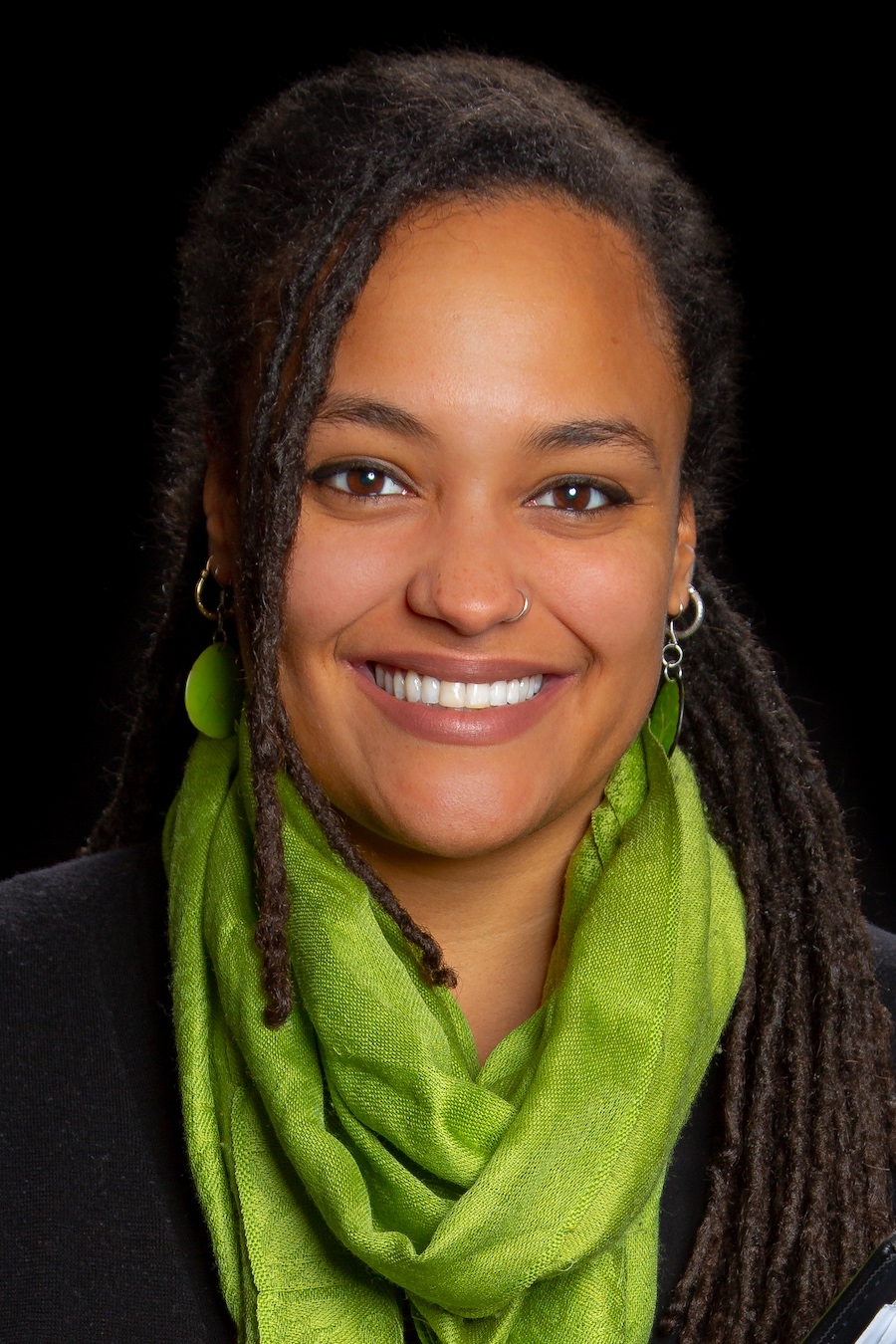
Monica Black, social worker at IU Health Riley Physicians Pediatrics | Photo by Garrett Poortinga, Green Hat Media
It is typical for Black to meet with a client once a month, even if their treatment would benefit from more frequent sessions. Black aims to build a good relationship with her clients, taking the time to understand each child or teen, to later make a compatible placement with an outside community therapist or agency. In an initial assessment with a young Black or brown person, her task is much harder; she will most certainly send the client to work with a white therapist. The ratio of Black clients in need of Black therapists is disproportionate to the limited number of Black or brown therapists available in Monroe County. Parents have confided to Black after an assessment for their Black child that they felt strongly about their child’s therapist being Black, even if that meant their child’s sessions would be only once a month. Mental health agencies can address the lack of providers of color by actively recruiting Black and brown therapists, and by honestly assessing the conditions for minority communities in Bloomington. As Black says, “We need to get people who represent the people we help into the spaces where we are helping.”
Black and brown folks study social work, counseling, and school psychology on Indiana University’s campus, but few remain in Bloomington after graduation. Black teaches a course on campus, and she says many Black students struggle with the demands of college life. Folks who are the first in their families to go away to college often find that they are unable to communicate the stressors of the college experience to their families back home. Black says there are few Black therapists because of the same issue: When students make it to college and take on substantial debt, there is great pressure to pursue a more lucrative career. Put simply, Black says, “Money is a barrier” to Black folks’ entry into the mental health sector. The social services field is notoriously underfunded and undervalued across the United States, deterring those who may have an interest but can’t sacrifice their economic stability.
The proposed 2021 City of Bloomington budget allocates more than $13 million to the police department; by contrast, the 2021 budget stipulates $869,000 to Community and Family Services. These numbers illustrate the argument made for defunding the police in favor of funneling more money into social services programming. Such a move might attract more Black and brown professionals into the mental health field.
Pay aside, people of color must feel welcomed and comfortable to make Bloomington their home. Black says that, after all, people decide to invest in their chosen communities. Why would you stay somewhere where you are not represented at the governmental, policy, and structural levels? She says more recruiting efforts through Ivy Tech Community College and Indiana University would be a positive step in bridging this gap in lack of providers. These outreach efforts could engage Black and brown students by introducing them to the social services field, by providing mentorship and choice internship opportunities, even scholarships. Of the changes within the mental health field that would have an immediate impact, Black champions hiring more Black and brown receptionists and front-office administrative folks so that people of color see themselves represented at their first point of contact with an agency.
Additionally, in Black’s vision for the future, Bloomington would have a group home, an institution she says our community is sorely lacking. By offering a structured, therapeutic environment for youth in Monroe County, young people would no longer need to be shipped outside of their community to receive the care they need.
Group homes are live-in facilities that offer 24-hour support for young people who require more help than outpatient therapy can provide. Often, the youth placed in group homes struggle with mental health issues such as self-harm or substance use, and trained therapists and staff provide interventions such as anger management or group therapy. Currently, foster children in Monroe County must be relocated from our community into a new county to access group home settings, which is disruptive to the youth’s life.
LGBTQIA+ students
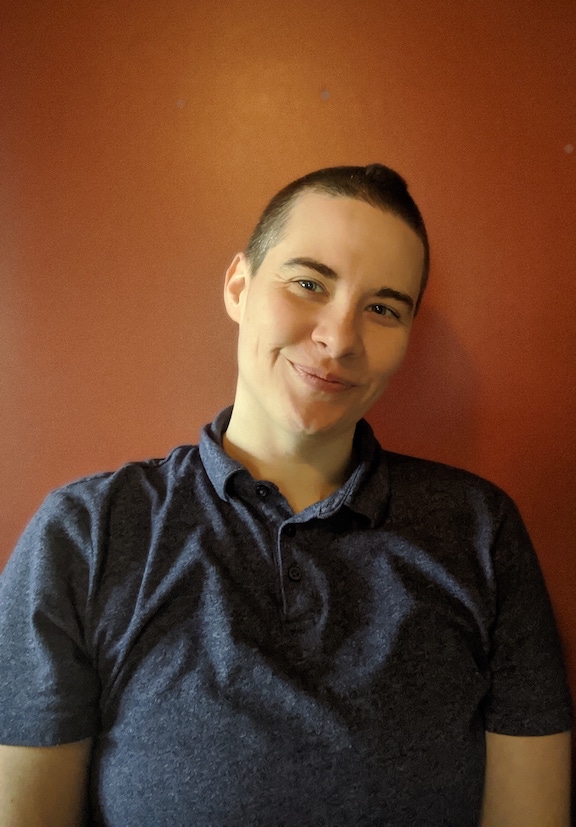
Kel Thomas, staff psychologist and practicum coordinator at Indiana University’s Counseling and Psychology Services. | Courtesy photo
Kel Thomas, staff psychologist and practicum coordinator at IU–Bloomington’s Counseling and Psychology Services (CAPS), identifies additional underserved populations in need of mental health services. Thomas describes CAPS’s response to the pandemic as proactive, saying that most staff from the health center began working from home around spring break.
Early in the pandemic, the number of students seeking counseling and psychiatric services declined, and now Thomas sees a steady rise in sessions and requests. Thomas is gender nonconforming and uses gender-neutral pronouns, which has positioned them as CAPS’s main provider working with trans, nonbinary, and questioning students. As a result, their wait list is longer than any other provider in the department. CAPS’s therapy model is not designed to be a long-term option for students. Thomas calls this a “brief model.”
“Ideally we see a client every other week, and the goal is to work with the student for six to ten sessions,” Thomas says. The limitations on the number of sessions CAPS provides can be a problem for students who have experienced trauma or who manage mental illnesses, as they will be referred to a community therapist for long-term support. It is a particular challenge referring trans and nonbinary students to providers in the community. Thomas knows of two therapists in Bloomington outside of CAPS who are themselves gender nonconforming, and often there are barriers such as long wait times and limitations in the kinds of insurances the providers are able to bill for services. While Thomas says several of their colleagues are trans competent and that there are other therapists on staff who identify as LGBTQIA+, many students who are trans or nonbinary request a therapist who shares their identity and can support them from a place of lived experience. However, Thomas says the biggest gap in services are for non-white students who are part of the LGBTQIA+ community, and that no local providers are both Black and LGBTQIA+ identifying. To address this disparity, Thomas says CAPS has assessed its hiring process through the use of a diversity committee to search for therapy candidates who identify at both of these intersections.
During the most recent round of hiring this past summer, interested Black and trans therapists from out of state who conducted internet searches on Bloomington would have found articles from local and national media about an attempted lynching of a Black man at Monroe Lake and the subsequent demonstration in Bloomington where a protester was hit by a car. Both incidents were likely red flags for those looking to relocate for work.
Language barriers and telehealth therapy
Thomas says language differences are the other barrier they see in the community and at CAPS. Of their colleagues, there is currently one Spanish-speaking provider, two Mandarin speakers, and possibly a few other therapists who speak additional languages, but these are slim numbers. Bloomington lacks Spanish-speaking therapists outside of CAPS, so referring clients is a difficult task. Thomas says that telehealth sessions have allowed some clients to be referred to Spanish-speaking therapists in the Indianapolis area. Meanwhile, CAPS continues to see a rise in inquiries for services from both undergraduate and graduate students.

‘Genesis,’ by Joanne Shank, acrylic. JoanneShank.com | Courtesy image
Centerstone is Monroe County’s main mental health facility in the community recognized for working with acute mental health needs such as substance use, addiction recovery, serious mental illness, and other intensive behavioral health needs for both adults and children. Abbi Powell is the manager of the Child & Family Services Program at Centerstone and says they organized quickly at the beginning of the pandemic to transition all staff to working from home around the time of Monroe County Community School system’s spring break. Initially, Centerstone therapists conducted sessions over the phone before they finally settled in with the Zoom platform, where they continue to provide telehealth therapy. Now, Centerstone is providing some sessions in person out in the community or outdoors as much as possible. One small substance-use recovery group remains face to face, while all groups have mainly moved to a virtual platform.
Travis Rathbun, the coordinator for the Monroe County Systems of Care, a service provided through Centerstone, says he hasn’t noticed any major changes in families’ abilities to manage parental responsibilities. However, he did say that youths’ routine environments have been disrupted as a result of all of the adaptations schools have been forced to make, adding that “children have been affected by their lack of socialization.”
When Powell was asked whether she felt Monroe County was meeting the mental health needs of the whole community, she says, “What we have is not enough. I think the pandemic brought this to light.”
Coordinating care
While agencies are working together in a spirit of cooperation, the influx in demand for services is currently overwhelming the usual support channels. Both Powell and Rathbun commend the ways in which agencies have effectively collaborated to coordinate care for clients. Given the need, Bloomington lacks adequate numbers of therapists, psychiatric nurse practitioners, psychiatrists, child psychologists, social workers, or other mental health professionals.
Outpatient psychiatric services are hard to come by for adults as well, and acceptance as a patient hinges on the type of insurance the individual uses or if they have the means to pay out of pocket. In addition to the problem of accessing affordable psychiatric medication management, Powell says that Monroe County in general does not have enough mental health therapists for both children and adults. There are only a handful of psychiatrists working in Bloomington. Rathbun says he feels optimistic regarding the community’s response to pandemic mental health needs, adding that he has coordinated between several agencies for Wrap-Around (intensive, family-intervention youth services) referrals, and the collaborations between agencies have been positive. Groups like Systems of Care, which Rathbun helps organize, are coalitions of agencies working diligently to improve outcomes for youth and adults in our community by bringing social services providers and agencies to one table. The interpersonal relationships built between the staff of the many partner agencies makes referring clients to one another’s programs a smoother process.
Sara McElroy, office manager at Spencer Psychology, agrees that clients at her Bloomington practice struggle to access mental health care sessions, due to different sorts of barriers. Spencer Psychology has moved most of their services to virtual telehealth sessions. But challenges arose for clients who lived outside of Bloomington, as internet connections in rural areas tend to be spotty. McElroy says clients were finding workarounds: “We have a handful of clients who drive to IU hot spots, public-school parking lots, or other publicly accessible Wi-Fi locations to access high-speed internet for their telehealth appointments.”
Similarly, parents of elementary and secondary school students who have struggled with increased anxiety related to deciding on what learning format they felt comfortable choosing for their child. In the Monroe County Community School Corporation (MCCSC) and Richland-Bean Blossom Community School Corporation, parents and children have had options of either in-person or virtual learning, or a hybrid of the two models. “Regardless of whether a family has opted for in-person learning, e-learning, hybrid, or home-schooling this academic year,” McElroy says, “it seems there is a trend across the board of parents feeling anxious about their decision and what it means for their children both academically and socially.” While the long-term effects to children’s psyches are unclear, behavioral challenges at home are the current manifestations of children’s frustrations. Spencer Psychology currently has a wait list of two to three months.
Catholic Charities Bloomington has continued to offer virtual-only therapy sessions since March. Michael Stribling, CCB associate director, says the pandemic has been a unique opportunity for the agency to connect with clients in an intimate way. Stribling says that shifting from in-person to virtual telehealth therapy has created a window into clients’ lives, saying that this strengthened bond happened through “getting to meet clients’ families and pets, seeing favorite items that make clients feel safe while facing their challenging moments, and being welcomed into their home.” Stribling knows his clients well, but the familiarity of the home setting allows clients to delve deeper into the therapy process, making space for new insights. Beyond their internal lives, CCB clients share their experiences of food shortages, job disruptions, housing changes, and losses. Folks attribute these events to their new or heightened feelings of anxiety, stress, depression, grief, and fear.
CCB therapists and many other providers in town offer Eye Movement Desensitization and Reprocessing (EMDR) therapy, a modality that enables healing for individuals who have experienced traumatic and stressful events, and is helpful in dealing with phobias or anxiety. EMDR can be done virtually and implementing this therapeutic tool has helped clients deal with the constantly evolving reality that is living through COVID-19. Despite the handful of benefits telehealth has brought to the therapeutic process, some individuals have declined beginning therapy at CCB until in-person sessions are possible.
CCB office manager Martha Heidenreich says that since the beginning of the pandemic, the rate of teens seeking services for anxiety has decreased, while calls from adults seeking services have increased. Heidenreich says that for adults, “anxiety was at an all-time high; fears of job loss, economy crashing, and getting COVID are still very real for many individuals. Adding a lack of structure, routine, and many life changes to an already uncertain virus pushed many adults over that hump towards needing mental health services.” Despite hiring three new full-time therapists since June, CCB still has a wait list of over 50 adults and children.
Childhood Conditions Summit
Bloomington’s Building a Thriving and Compassionate Community (BTCC) is a coalition of organizations and individuals working to address root-cause issues in Monroe County. The BTCC, in partnership with the Youth Services Bureau of Monroe County, a department of county government, offered a virtual version of their annual Monroe County Childhood Conditions Summit. Stephanie Solomon, a member of BTCC, helped organize last year’s summit in October and says that through surveying community members on interests and needs for the summit, BTCC heard from both adults and young people for whom COVID-19 has increased the need for mental health services. BTCC’s goal “is to zoom out and look at the community-level conditions that we have,” Solomon says. “We have a tendency to focus on youth and families on an individual level, and we want to say, ‘What are the wide-range issues affecting people?’”
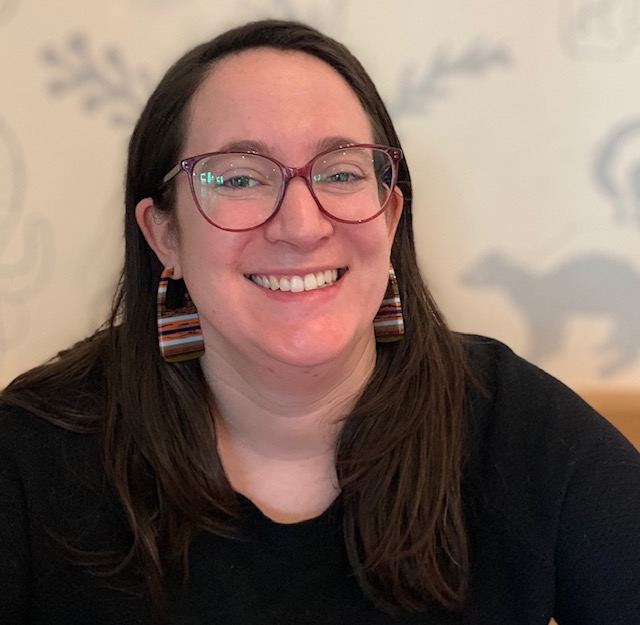
Stephanie Solomon, prevention coordinator at the Youth Services Bureau of Monroe County and a member of Building a Thriving and Compassionate Community. | Photo by Megan Betz
Solomon points to policy issues such as how the COVID-19 pandemic has been handled at the local level and the way in which elementary and secondary schools made decisions regarding in-person versus virtual learning. Several teenagers were invited to participate on a panel at the summit, and Solomon says they addressed how being isolated from peers affected their mental health. Additionally, the teens watched the wave of national demonstrations against police brutality and considered what they were or were not learning through their history and social-justice curriculum. The whole purpose of putting on the summit, says Solomon, is that there is just not a lot of information out there on how to change conditions and systems for families and children to allow them to thrive. Plenty of resources are available for how to work with individuals or groups of children (from the Substance Abuse and Mental Health Services Administration, Child Mind Institute, and Teaching Tolerance, for example), but the Childhood Conditions Summit brought together many organizations to think about overarching structures to learn how things might improve.
Solomon says the wider community of Bloomington and Monroe County must “build our capacity to provide services people need.” Loneliness is quietly becoming its own epidemic in America, and research from the Health Resources and Services Administration, among others, shows that isolation is harmful to an individual’s physical health. In fact, loneliness has been cited to be as harmful to physical health as a 15-a-day cigarette habit. Social connection is the natural antidote to isolation, but cultivating opportunities for that to occur will need to be strategic, especially during the pandemic and its aftermath. As Solomon points out, “We know that social connection is a protective factor against mental health problems.” Further, she says opportunities for socialization are a “missing link” in ensuring our community’s mental and physical wellness. Two community institutions providing social and emotional supports for children and adolescents are the school districts.
‘Supporting the whole child’
Another BTCC member, Tara Green, lauds MCCSC for its work in what she calls “supporting the whole child.” Prior to COVID-19, a movement toward supporting children holistically had been growing in line with national trends over the past decade or so, which encouraged MCCSC to develop additional resources in all their schools. “MCCSC has funded staff positions in student services, social-emotional learning, and diversity and inclusion,” Green says. “They have also made space in the school-day schedule for time that allows them to connect with things that can support student mental health.”
These intentional efforts to address the mental health needs of students more fully have been necessary structural additions in supporting children in their new learning terrain. Teachers have had to balance working with students across multiple platforms at different points in the pandemic, from e-learning to modified in-person classes to some students remaining in virtual formats, and other combinations of these arrangements. Green offers guidance for educators on meeting the needs of both their elementary and secondary students, saying, “In the Essentials for Childhood framework, the [Centers for Disease Control] calls for anyone who works with youth to focus on what they call SSNREs: Safe, Stable, Nurturing Relationships, and Environments. Each adult who interacts with youth can ask themselves, What can I do to help youth feel safe, stable, and nurtured — physically, emotionally, and intellectually — in the environment I provide and the relationships they have in that space?’”
This sentiment of nurturing is especially important with regard to moving students into an online format of learning, as the social connections with peers and mentoring connections with teachers are so necessary in helping young learners feel like they are a part of their school community.
A sense of belonging and connection does more than create feelings of safety. Green points to research on how stress impacts the brain’s ability to access its potential to internalize new information. A Child Mind Institute survey says that during the pandemic, teens are reporting higher degrees of stress, anxiety, and depression, indicating that youth’s ability to learn has been compromised.
Conflict resolution
The pandemic has had a similar impact on office environments, and organizations like Community Justice & Mediation Center (CJAM) have continued their work in finding equitable solutions when disputes arise. CJAM’s executive director, Liz Grenat, says CJAM provides four main silos of services: community mediation services, restorative justice, conflict resolution and mediation training, and facilitative work. Individuals and groups can collaborate to address harm or conflict with the support of a nonjudgmental, neutral mediator, Grenat says. CJAM creates an environment where healing conversations can take place, maintaining the emotional and physical safety of both parties. Resolving these interpersonal and internal agency issues contribute to the overall health of a community. Grenat says COVID-19 has impacted the agency in different ways, and that whenever lockdown restrictions are lessened, “there are more opportunities for people to make decisions that are not wise for the individual or community.”
During the initial phase of the pandemic, fewer crimes like theft occurred, decreasing the overall need for restorative justice between two parties. Grenat says Monroe County civil court cases have resumed, albeit virtually and not in person. CJAM works closely with the local court system to mediate disputes between landlords and tenants outside of small claims court when possible. CJAM has moved all its work to a virtual format in response to the pandemic, and Grenat says the organization has recently received many referrals for businesses and organizations that may have had existing issues in management, policies, or communication prior to the coronavirus. In many cases, she says, the move to virtual has created “more pressure to get along and to change quickly. Moving to a virtual format is frustrating for some employees.” Organizations with these challenges can request a “tune-up” consultation through CJAM, as a means of improving employer-to-employee communication.
Among the challenges in operating virtual mediation and restorative justice sessions, Grenat says, is the difficulty in reading an individual’s body language over a screen. Unlike in mental health therapy, where a close relationship has been developed over time, virtual restorative justice sessions are often conducted by mediators who might not know their clients well. Additionally, tensions are often heightened between the two parties, and the mediator must work to build a safe space for conversation at a distance. Whether in landlord-tenant disputes or restorative justice scenarios, Grenat emphasizes that the focus should be on “what are the things you can do to make amends and what are the things you can personally do to move forward?”
CJAM works closely with folks facing eviction. While the latest coronavirus relief bill extended the moratoriumthrough January, some landlords have elected to press forward with eviction proceedings.
Evictions clearly disrupt the stability of families, and housing instability contributes to poor mental health outcomes. Shelter is a fundamental need found at the base of Maslow’s Hierarchy of Needs. Without shelter, people understandably experience fear, worry, anxiety, and depression. CJAM coaches folks through the eviction-court process, all over virtual platforms. Grenat says eviction proceedings over Zoom have been “very interesting,” as they involve multiple mediators, break-out rooms, appearances before the court and judge, and a mediator managing a room Grenat calls the “air-traffic control room.”
When CJAM clients leave their court session, they can meet again with the mediators and their staff to receive resources that can help them move forward following possible eviction. CJAM and its partner agencies help clients navigate situations that even under ordinary circumstances might be emotional and overwhelming. Their work will be valuable post-vaccine, as the financial challenges caused by the pandemic are projected to last long into the future.
Monroe County is home to many mental health professionals who are dedicated to better serving our community. They have been aware of the areas where more supports are needed. Shifting operations to virtual therapy has been an enormous undertaking for the front offices and therapists, but the urgency with which organizations approached the transition surely maintained stability for folks who were already in therapy. While the need for mental health services is far from slowing down, organizations are quickly identifying what they need to do to meet folks where they are.
Tragically, more families will lose loved ones before the end of the pandemic. As a community, we need to be prepared to pick up the pieces. Knowledge is power: If you or or a loved one are experiencing mental health issues, reach out to a therapist or other mental health professional. Below is a list I’ve compiled of other organizations and providers. Also, if you are able, consider how you might donate to an agency caring for those experiencing emotional pain, so that they can continue providing care long after the pandemic has ended.
If I have learned anything from my journey with my own mental health, it’s that any struggle I’ve experienced in finding the right care and treatment has been absolutely worth it for the depth of healing I have experienced. And if there is ever a good time to ask for help, well, it is now.
Mental Health Organizations and Providers
Centerstone
To set up an initial appointment: 877.467.3123
Main: 800.344.8802
IU Riley Physicians, Landmark
812.332.9874
Ask for an assessment with the Behavioral Health Department for your child or teen.
Catholic Charities Bloomington
812.332.1262
Call the front desk to do an over-the-phone application
Spencer Psychology
812.333.8474
Fill out an inquiry online at their website to get scheduled for an appointment
Lindeman and Associates
812.650.1234
referrals@drdawnlindeman.com
Accepts many types of insurance companies
New Outlook Counseling Center Inc.
812.929.2193
Appointment-request link on the website
Milestones Clinical & Health Resources
812.333.6324
milestones@stonebelt.org
Counseling and Psychology Services (CAPS)
812.855.5711
Located within Indiana University’s Student Health Center, providing services for university-affilitated individuals.
Offers free Gender Expressions and Queer Space support groups.
Community Justice & Mediation (CJAM)
812.336.8677
admin@cjamcenter.org
Click here for more Therapists in Bloomington (Psychology Today)
Click here for more Mental Health Organizations (Bloomington Health Foundation)
About the Artists
Local artists Chris Mott and Joanne Shank provided artwork to accompany this article.
Chris Mott (https://www.chrismott.art) is a local artist and musician whose woodworking uses “bold colors with abstract, hand-cut landscapes, utilizing the strong line and weights of wood to push simple themes into deeper movements.”
Moonage, by Chris Mott (2019), cut wood and oil
Joanne Shank (http://www.joanneshank.com) works in three painting styles: watercolor, abstracts, and music gesture drawings. “Though these three styles appear very different,” she says on her website, “they are similar in that I am trying to capture the energy of the moment.”
Upland Pass, by Joanne Shank, acrylic
Genesis, by Joanne Shank, acrylic


